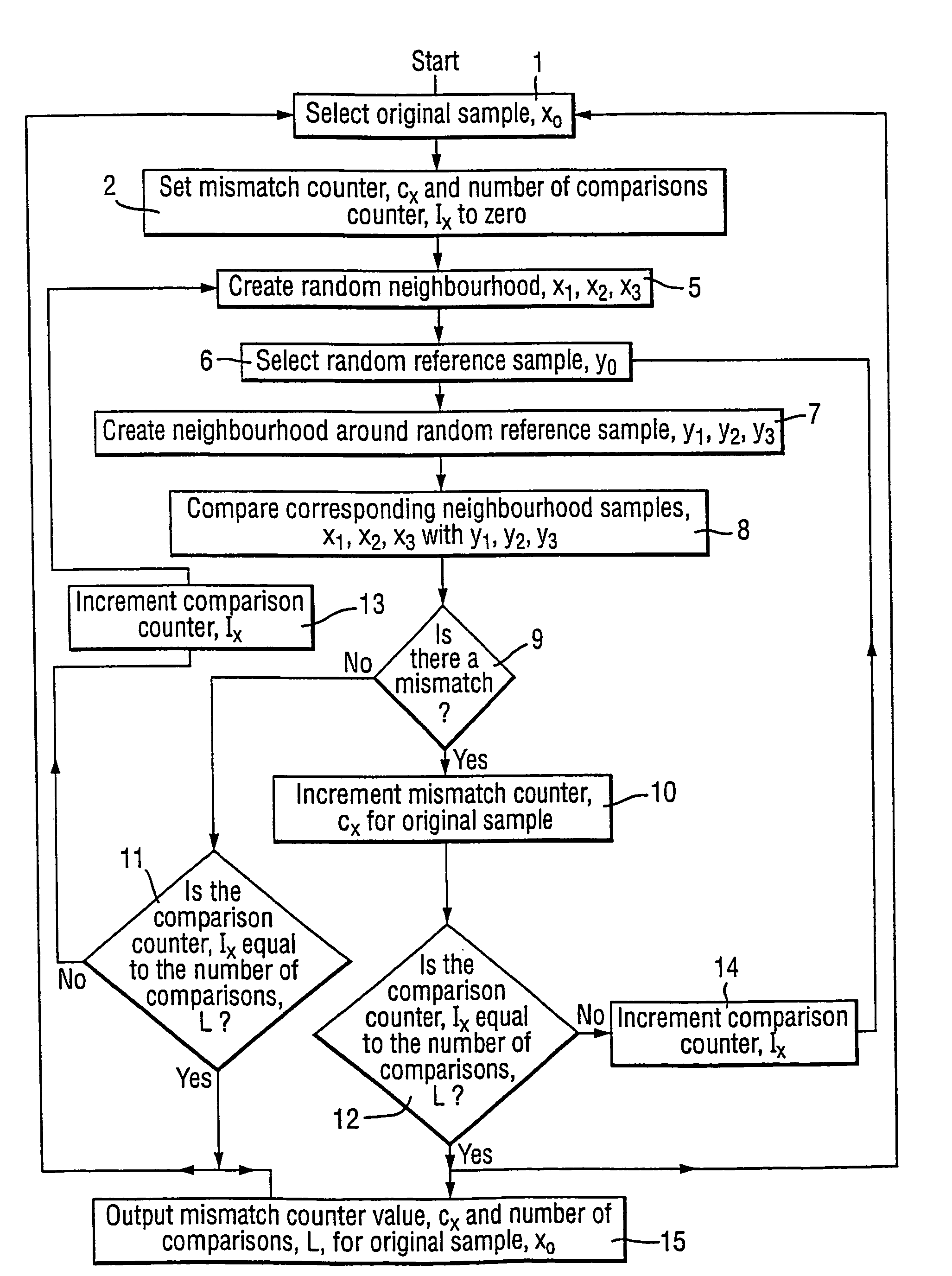Anomaly recognition method for data streams
a recognition method and data technology, applied in speech analysis, speech recognition, instruments, etc., can solve the problems of noise removal with any degree of success, impossible to perfectly characterise, and audio signals may be subject to two principal sources of noise,
- Summary
- Abstract
- Description
- Claims
- Application Information
AI Technical Summary
Benefits of technology
Problems solved by technology
Method used
Image
Examples
Embodiment Construction
[0059]The ordered sequence of elements which form the data is represented in an array derived from an analogue waveform. Although the data may be a function of more than ne variable, in this invention the data is “viewed” or ordered in dependence on one variable. Thus, the data can be stored as an array. The array is a one dimensional array, a 1×n matrix. Data in a one dimensional array is also referred hereinbelow as one dimensional data. The values of the data contained in the array may be a sequence of binary values, such as an array of digital samples of an audio signal. One example of the anomaly recognition procedure is described below in connection with FIGS. 1-8, where the neighbouring elements of x0 are selected to be within some one-dimensional, distance of x0. (Distance between two elements or sample points in this example may be the number of elements between these points).
[0060]Detection of anomalies in data represented in a one-dimensional array (eg: time resolved data...
PUM
 Login to View More
Login to View More Abstract
Description
Claims
Application Information
 Login to View More
Login to View More - R&D
- Intellectual Property
- Life Sciences
- Materials
- Tech Scout
- Unparalleled Data Quality
- Higher Quality Content
- 60% Fewer Hallucinations
Browse by: Latest US Patents, China's latest patents, Technical Efficacy Thesaurus, Application Domain, Technology Topic, Popular Technical Reports.
© 2025 PatSnap. All rights reserved.Legal|Privacy policy|Modern Slavery Act Transparency Statement|Sitemap|About US| Contact US: help@patsnap.com



